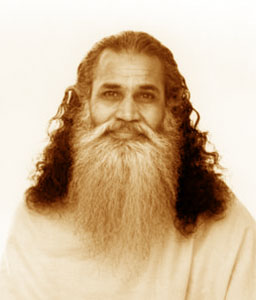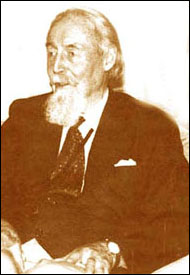|
Some two hundred have gathered here
to meditate and clear their mind in
six hours. Zen Master of Rochester
Philip Kapleau asked the crowd—
.jpg)
Three Pillars of Zen
by Philip Kapleau
|
.jpg)
Philip Kapleau
Zen Master of Rochester
|
Three Pillars of Zen (1965) is a Zen classic, which introduced me to Zen Buddhism.
Ram Dass writes a glowing review of this book (July 14, 2015),
how Kapleau was one
of the founding fathers of American Zen, transplanting it from Japan
to American soil.
"Buddhism in America"
tells about Kapleau's teaching at his Rochester Zen Center
(By George Vecsey, New York Times, June 3, 1979). Kapleau had 13 years of Zen
training in Japan, and received permission to teach in 1965 from
Hakuun Yasutani
(1885-1973). I enjoyed Kapleau's book as it contained examples of Zen practioners
experiencing satori (enlightenment). |
"How many of you are seeking
enlightenment?" All hands went
up in the gym including mine—
quite a wonderland sight to see.
.jpg)
Hands Raised
|
.jpg)
Hands Raised in Crowd
|
Philip Kapleau addressed the roomful of Zen aspirants at Harvard:
"There are too many of you wanting to become Buddhas." He asked
"How many of you are seeking for enlightenment?" And all the hands
went up. Of course, I didn't have a camera with me for that snapshot.
The two photos above are from Google Images of "Hands Raised" |
Kapleau shook his head— you know
what Picasso said on this—
"I do not seek— I find."
Whoa! Whoa!— My mind leaped—
.jpg)
Graham Sutherland Meeting
Picasso (Nov. 20, 1947)
|
.jpg)
Graham Sutherland (1903-1980)
Self Portrait (1977)
|
.jpg)
Christ in Glory (1962)
by Graham Sutherland
|
When Kapleau quoted Picasso: "I do not seek. I find." my mind literally leaped
for an instant awakening. I did not ask the Zen Master for the source of his quote,
nor did I have the time to trace the quote in books on Picasso. With convenience
of the Internet now, I found the quote at Tate Gallery
when the British painter
Graham Sutherland visited Picasso (Nov. 20, 1947) in Vallauris, southern France. |
No wonder we're not enlightened—
hopping from guru to guru,
searching sacred texts for clues,
chanting "Om"s and getting nowhere!
I began reading about Buddhism around 1967, to have a clearer mind
for more creative research in biochemistry
where I was doing a doctorate at Cornell. I met
Anthony Damiani
at his bookshop, American Brahman in downtown
Ithaca (4-5-1968), and attended his weekly seminars on
the perennial philosophy. He introduced me to the teachings
of Paul Brunton and
Ramana Maharshi. I didn't know
at the time that Anthony
was my first spiritual mentor. I met
Sri Chinmoy and Satchidananda
at Cornell (1969), Yogi Bhajan at Brandeis (1971), Paul Reps in Boston (5-3-1971),
Swami Rama (1972). After meeting the sage Paul Brunton
in Switzerland (8-30-1972), I stopped searching for gurus,
since Anthony regarded PB as an authentic sage with cosmic consciousness. Sacred texts consulted
include I Ching,
Lao Tzu's Tao Te Ching, Bhagavad Gita and Upanishads. At Brandeis, took
yoga classes with Haven O'More,
where we did lots of "Om" chanting (1970-1972). Other gurus crossing my path include
Master Subramuniya
(6-14-1970 & 6-15-1999),
Swami Chinmayananda (1972-1980, 1985),
Zen Master Seung Sahn (1975-1978),
the Irish sage Wei Wu Wei (1979), and the Native American Shaman
Charlie Thom "Red Hawk" (1989). |
Photo Sources: Sri Chinmoy (thebluebird.co.nz;
Satchidananda (yogaville.org);
Yogi Bhajan (3ho.org);
Paul Reps (livinghaikuanthology.com/);
Swami Rama (themeditationcenter.org);
Paul Brunton (paulbrunton.org);
Master Subramuniya (himalayanacademy.com);
Swami Chinmayananda (wisdomportal.com);
Zen Master Seung Sahn (musangsa.org);
Wei Wu Wei (wisdomportal.com)
|
From then on— Picasso's words became
my new manta— fly with his bird
"Peace Dove" to find treasure-trouves
in my protein structure research.
Recalled Picasso Dove depicted in postage stamps, and have found them on the web from Czechoslovakia,
People's Republic of China, and Poland. PRC #187-189 stamps are poorly perforated and rendered better
in Photoshop. Poland #1320 stamp was poorly centered and was corrected in Photoshop.
|
And I was the first to find helix,
sheet, and reverse-turn potentials
of amino acids in proteins and
predict their structures without computers.
.jpg)
Chou-Fasman Amino Acids
Potentials for Helix, Sheet, β-Turns
|
1974(778x1009).jpg)
Biochemistry 13 (211-222), 1974
"Conformational Parameters"
|
1977(621x900).jpg)
Journal of Molecular Biology 115
(135-75), 1977 "β-Turns in Proteins"
|
With Picasso's "I do not seek— I find." as my mantra, plunged ahead and
tabulated the occurrences
of 20 amino acids in α-helix, β-sheet, and
reverse turns in 15 proteins with known X-ray structures.
This research was done in
Professor Gerald D. Fasman's lab
at Brandeis University and published
in Biochemistry 13 (211-222) 1974.
The accompanying paper "Prediction of Protein Conformation"
in Biochemistry 13 (222-245) 1974
utilized these potentials and six simple rules to predict protein
secondary structures. The latter paper became a Science Citation Classic
"cited in over 1,160
publications, making it the most-cited paper for this journal". Took three more years
to elucidate
459 β-turns in regions of chain reversals in 29 proteins, calculated from
X-ray atomic co-ordinates.
It was published in Journal
of Molecular Biology 115 (135-75), 1977.
|
The pain from those Zen stick whacks
have long faded away, but what
the Zen Master said that day remains—
Picasso's "I do not seek— I find."
.jpg)
Pablo Picasso
(1881-1973)
|
.jpg)
Senegal C59 (issued 7-22-1967)
Les Demoiselles d'Avignon (1907)
|
.jpg)
Czechoslovakia 1408 (issued 7-5-1966)
Picasso's Guernica (1937)
|
Pablo Picasso was a Spanish painter, sculptor, printmaker,
ceramicist, stage designer, poet and playwright who spent most
of his adult life in France. Regarded as one of the
most influential artists of the 20th century, he is known for co-founding
the Cubist movement, the invention of
constructed sculpture, the co-invention of collage, and for the wide variety of styles
that he helped develop
and explore. Among his most famous works are the proto-Cubist Les Demoiselles d'Avignon (1907),
and Guernica (1937),
shown above in postage stamps.
Thomas Hoving wrote in the Los
Angeles Times (May 8, 2007):
"There's nothing like it—
Les Demoiselles d'Avignon in history of art." It is "a deliberate throw of the gauntlet to the entire
history of art.
You can see it again and again and still be struck dumb by its audacity, its freshness and its courage." When I
saw Picasso's Guernica that occupied an entire room at the Museum of Modern Art in NYC (1960), I was awed by Picasso's
depiction on the horrors of war in the bombing
of Guernica during the Spanish Civil War (4-26-1937). Despite the negative
images, there is a flower growing from a shattered sword, a light bulb
in the eye witnessing the horror. A female figure floats into
the room through a window carrying a flame-lit lamp near the light-bulb eye. Is this the
Conscience we need as
guide from a crazy world to righteousness? Picasso's motto "I find"
has remained with me in my protein research
as well
as writing poetry.
Photo Sources: Picasso (entertainment.howstuffworks.com);
Senegal C59 (colnect.com);
Czechoslovakia 1408 (colnect.com)
|
— Peter Y. Chou
Mountain View, 4-18-2019
| Top
| Poem "My New Mantra"
| Poems 2019
| Poems 2018
| Poems 2017
| Poems 2016
| Poems 2015 |
| Poems 2014
| Poems 2013
| Poems 2012
| Poems 2011
| Haikus 2019
| Haikus 2018
| Haikus 2017 |
| Haikus 2016
| Haikus 2015
| Haikus 2014
| Haikus 2013
| Haikus 2012
| News
| CPITS
| Books
| A-Z Portals
| Home |
© Peter Y. Chou,
Wisdom Portal
P.O. Box 390707, Mountain View, CA 94039
email:  (4-18-2019) (4-18-2019)
|
 |
| | | | | | | |
.jpg)
.jpg)
.jpg)
.jpg)
.jpg)
.jpg)
.jpg)
.jpg)
.jpg)
.jpg)
.jpg)

.jpg)
.jpg)
.jpg)
.jpg)
.jpg)
.jpg)


.jpg)
.jpg)
.jpg)
.jpg)
.jpg)
.jpg)
.jpg)
.jpg)
.jpg)
1974(778x1009).jpg)
1977(621x900).jpg)
.jpg)
.jpg)
.jpg)
